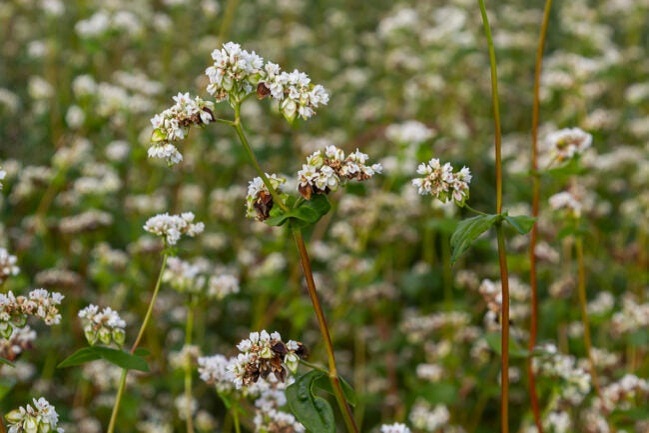While many associate spring with planting, the autumn season holds its own charm for garden enthusiasts. With milder temperatures and refreshing cool nights, fall offers an ideal environment for nurturing a diverse range of cool-season vegetables. Beyond veggies, September presents opportunities for planting shrubs, trees, grass seed, and spring-flowering bulbs.
If you thought your gardening tasks were over after August, think again – the possibilities for what to plant in September are both abundant and diverse. From creating stunning focal points to cultivating delectable edibles and implementing weed-thwarting cover crops, the garden remains a place of exciting prospects as summer transitions to fall.
Brussels Sprouts (Brassica oleracea var. gemmifera)
In the realm of fall vegetable gardening, one often ponders what to sow once the reign of tomatoes starts to wane. Enter Brussels sprouts, a splendid choice for the cooler months. In numerous climates, these little green globes find their home in the soil no earlier than September. The charm of Brussels sprouts lies in their resilience; they can thrive in the garden as long as the mercury hovers above 20 degrees Fahrenheit.
Being a member of the cole crop family, it’s wise not to plant Brussels sprouts in a spot where other cole crops have dwelled within the past four years. This helps ward off common diseases and unwelcome pests like cabbage worms. The vast clan of cole crops includes the likes of kale, broccoli, cauliflower, cabbage, collards, mustard, kohlrabi, and turnip. When it comes to Brussels sprouts, the Catskill variety stands as a crowd favorite, renowned for its bountiful production of perfectly round sprouts. To foster their growth, maintain consistent soil moisture by watering at least once a week.
USDA Hardiness Zones: 2 to 9.
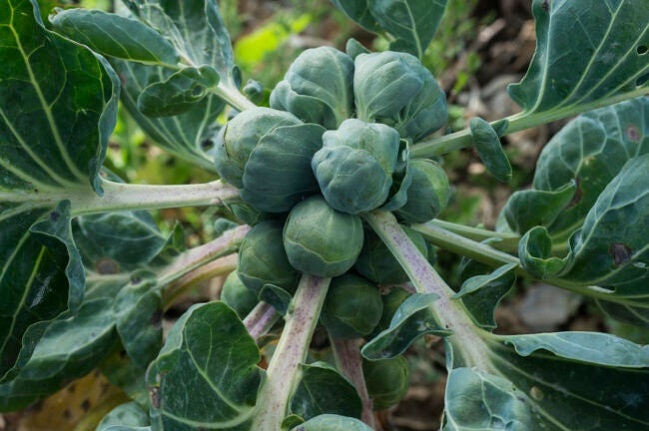
Carrots (Daucus carota subsp. sativus)
In the realm of September plantings, carrots emerge as a star player, and for good reason. These root veggies thrive in cooler conditions, making them a perfect choice for this time of year. The carrot’s growth clock ticks relatively swiftly, with an average maturation period of about 60 days. To sync with the changing seasons, sow carrot seeds in the soil approximately 10 to 12 weeks before the anticipated first frost date. What’s interesting is that carrots can even endure a gentle frost.
Given their diminutive seeds, it’s crucial to plant them in soil that’s loose, well-draining, and devoid of any debris. Raised beds, with their structured and controlled environments, prove to be excellent homes for these colorful taproots. Once the carrot tops reach a height of 1 to 2 inches, it’s time for some strategic thinning. Space the plants 1 to 4 inches apart for optimal growth. For a visually captivating garden, opt for colorful carrot varieties like the Kaleidoscope blend, which yields a delightful mix of yellow, purple, orange, and white carrots.
USDA Hardiness Zones: 3 to 10.
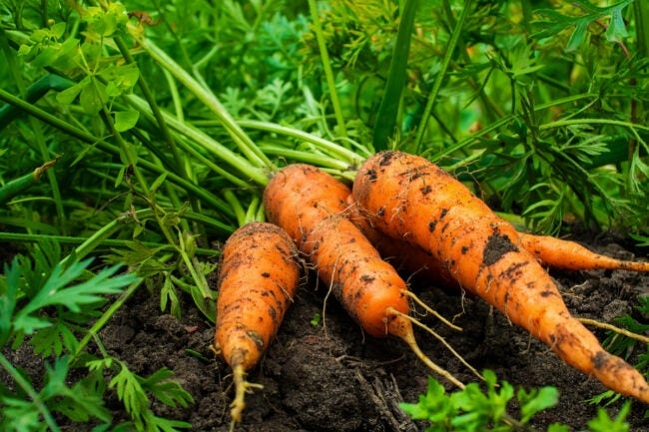
Lettuce (Lactuca sativa)
In the realm of September plantings, lettuce stands out as a star player, particularly suited to the cool season. Lettuce, averse to high temperatures, thrives when sown in September. It’s worth noting that when soil temperatures soar above 80 degrees Fahrenheit, lettuce seeds often struggle to sprout, which is why planting it during a period when daytime temperatures range between 55 and 65 degrees Fahrenheit is ideal.
To set the stage for lettuce success, sow your seeds directly into well-draining, fertile soil. Depending on the variety, you can expect your lettuce to be ready for harvest within a relatively short span, typically around 5 to 7 weeks. For those who adore classic Caesar salads, the Paris White Cos lettuce, an heirloom green, is an excellent choice. On the other hand, if you’re looking for a cold-hardy red butter variety that can endure the chill, consider planting Four Seasons, which can even be harvested well into the winter in areas without heavy snowfall.
USDA Hardiness Zones: 2 to 11.
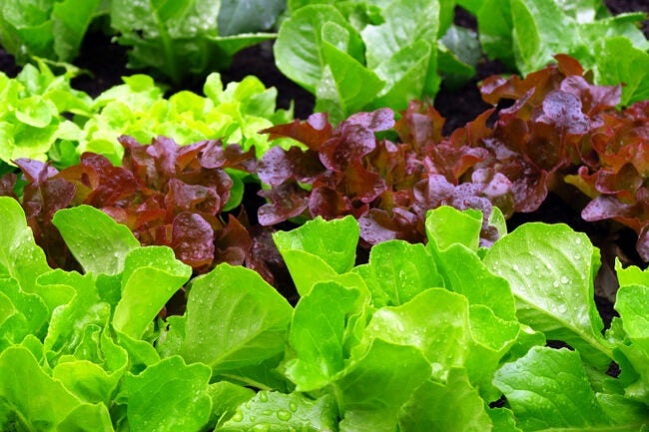
Beets (Beta vulgaris)
When it comes to edible plants, root vegetables often take center stage as some of the best crops for fall planting. Among these, beets shine as a top choice for September planting. Beets have a preference for cooler temperatures, making them thrive during this season. While beet roots can potentially grow up to 4 feet in length in good soil, they are typically harvested before reaching such sizes. To provide beets with the ideal growing conditions, many gardeners opt for raised beds, which offer the extra depth and drainage necessary for success.
It’s worth noting that both the root and the green tops of beets are edible, making them a versatile addition to your garden. For optimal results, sow beet seeds in September, especially when overnight temperatures start to drop. Most beet varieties require about 60 days or more to reach maturity, so if you have an earlier frost date, consider selecting a variety like Early Wonder, which can be ready to harvest in as little as 55 days.
USDA Hardiness Zones: 2 to 10.
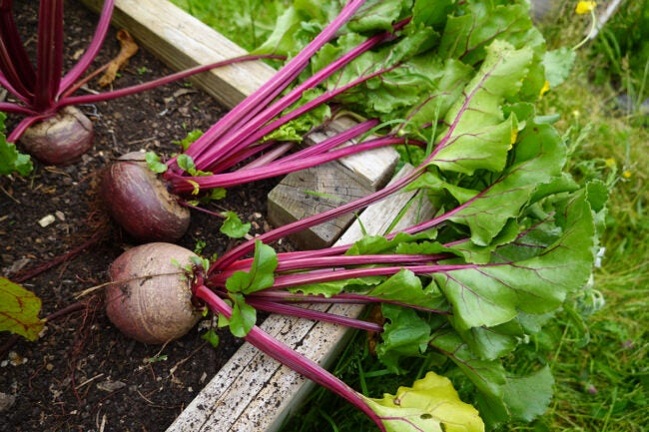
Eggplant (Solanum melongena)
Eggplants are typically regarded as warm-season vegetables, primarily thriving in the majority of the United States. However, for gardeners residing in southern and Mediterranean climates—specifically those in Zone 10 and above—September can be an opportune time to plant eggplants. The key to their success in these regions lies in their aversion to excessive or dry heat, making the late summer and early fall months ideal for cultivation. For example, in places like Southern Florida, eggplants are typically grown between August and February.
One interesting aspect of eggplants is that they can adapt well to container gardening. This makes them a versatile choice for individuals with limited garden space. Smaller eggplant varieties like Finger Fruit Purple are particularly suitable for container gardening, as they produce miniature eggplants measuring approximately 4 to 6 inches in size.
USDA Hardiness Zones: Eggplants can be grown in Zones 10 and up during the fall. In other regions, they can be cultivated in Zones 3 to 12.
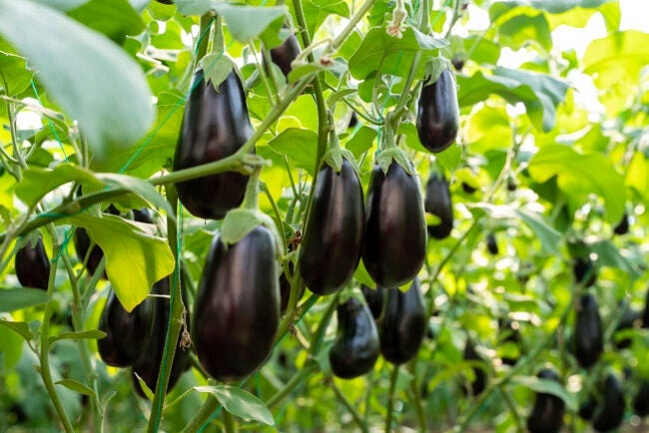
Leeks (Allium Porrum group)
In regions blessed with mild southern winters or Mediterranean climates (typically Zones 7 and higher), September offers an excellent opportunity to introduce leeks into your garden for a winter harvest. Unlike their onion relatives, leeks don’t form distinct bulbs but instead produce tall stalks, reaching heights of 2 to 3 feet, offering a milder onion flavor.
To ensure the lower portion of leeks remains white and retains its mildness, gently mound soil around the stems once they’ve reached a height of 6 to 8 inches. Leeks thrive in nutrient-rich soil and can withstand light frosts, with most varieties showing resilience down to temperatures as low as 20 degrees Fahrenheit.
However, in regions with cold winters, typically Zones 2 to 6, leeks are best planted as a late spring crop due to their longer growing period, which spans between 90 to 120 days. For autumn and fall planting in milder climates, the Giant Winter Leek (Allium ampeloprasum) stands out as an ideal choice, capable of thriving through winter and providing a bountiful spring harvest.
USDA Hardiness Zones: For fall planting, Zones 7 to 11; for spring planting, Zones 2 to 11.
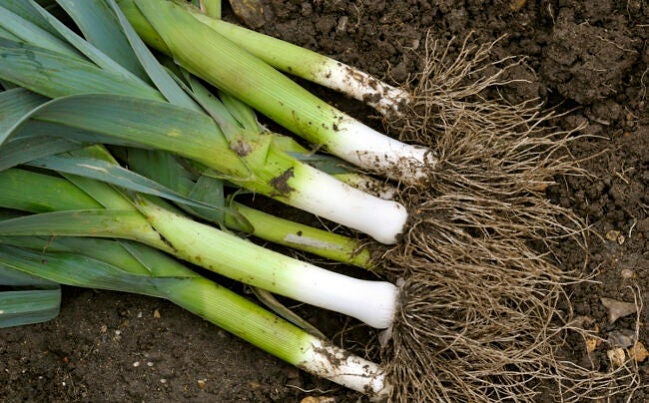
Blueberries (Vaccinium sect. Cyanococcus)
While blueberries are often associated with spring planting, these versatile shrubs can find a welcoming home in your garden come September. Blueberries thrive in rich, acidic soil and require a minimum of 2 feet of space for a blueberry hedge, while individual plants can be spaced as much as 6 feet apart.
Various blueberry varieties are tailored to specific climates. For those living in northern climates (Zones 3 to 7), Patriot is an excellent choice. If you’re seeking a visually striking shrub that thrives in Zones 5 to 10, Pinky is a fantastic option.
USDA Hardiness Zones: 3 to 10.

Peonies (Paeonia)
While many crops find their place in the September planting roster, don’t forget the joy of planting flowering beauties. Tubers and bulbs sown in the fall bring forth a burst of color in the following spring, and one of the most splendid choices is the peony.
Peonies come in two primary categories: herbaceous types, descendants of P. lactiflora, which die back entirely in late fall, and tree peonies (P. suffruticosa), which bloom from woody branches. Both can be introduced to the garden in September.
These elegant blossoms grace the garden with a diverse range of colors, often exuding fragrant aromas and featuring captivating foliage. Consider Karl Rosenfield, a classic crimson-hued, double-flowering peony that adds a touch of grandeur to floral arrangements. Alternatively, White Lullaby produces lush, pale blooms infused with a delicate fragrance.
USDA Hardiness Zones: 3 to 8.
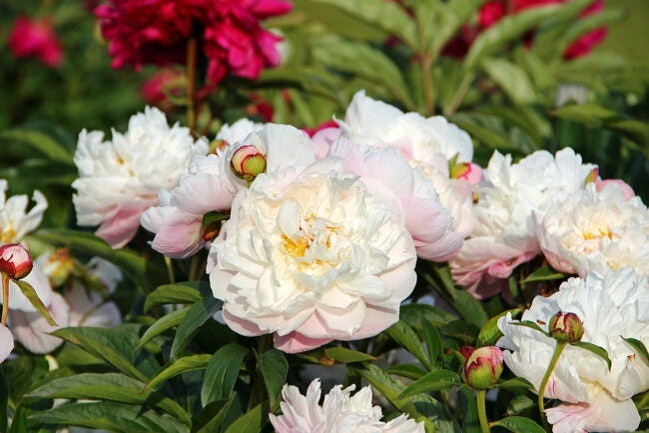
Anemones (Anemone coronaria)
Anemones, often referred to as windflowers, are known for their charming blooms that come in a range of captivating colors, from enchanting blue-purple to vibrant orange, all featuring striking dark centers. If you reside in Zones 8 to 12, you have the opportunity to plant anemone bulbs as early as September (for those in USDA Zones 2 to 7, it’s advisable to wait until late winter or early spring).
To ensure the best results, Eden Brothers Nursery recommends a brief soak of 2 to 3 hours (no longer) in lukewarm water for anemone bulbs before they find their place in the soil. Among the delightful varieties, the De Caen stands out with its white petals and contrasting dark center, a favorite among florists, especially for crafting exquisite wedding bouquets. If you fancy a classic purple hue, consider the Mr. Fokker variety.
USDA Hardiness Zones: 8 to 12 for fall planting; 2 to 7 for planting later in the year.
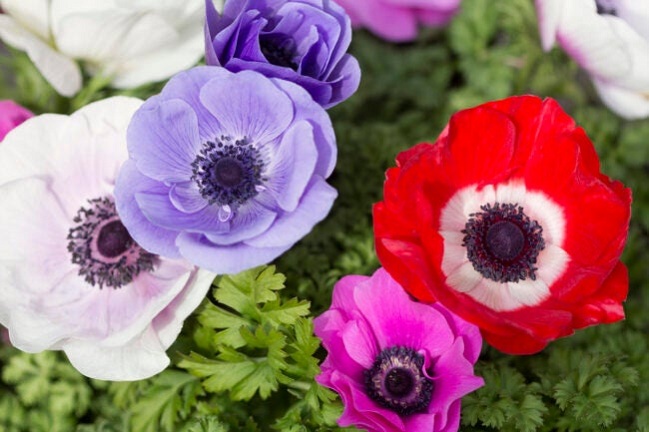
Daffodils (Narcissus)
While tulips and hyacinths can wait until October or even November, the top choice among bulbs to plant in September is undoubtedly the daffodil. Daffodils require ample time to establish their root system before the onset of a severe freeze, but they thrive when the ground maintains a consistently cool temperature, making September an ideal planting month. In regions with warmer climates, late October may be a more suitable timeframe. It’s worth noting that daffodils belong to the Narcissus genus, and the terms are sometimes used interchangeably.
Typically, gardeners use ‘daffodils’ to describe the larger-flowered varieties, like the vibrant yellow Dutch Master or the British Gamble, which boasts white petals and a delicate peach-colored trumpet. On the other hand, paperwhites represent the fragrant, smaller-flowered narcissus variety, often cultivated indoors or in winter gardens within mild climates (USDA Zones 8 to 10). While daffodils can be planted in zones above 9, they may not reliably return year after year.
USDA Hardiness Zones: 3 to 9.

Pansies (Viola tricolor hortensis or V. x wittrockiana)
Gardeners seeking to fill their fall gardens with vibrant blooms can turn to the delightful pansy as the perfect replacement for summer annuals. Pansies, known for their cold-tolerance, can be planted in September, infusing a burst of color into areas once occupied by petunias or snapdragons.
These charming flowers flourish in containers, provided they have well-draining potting soil and receive partial sun—though it’s wise to shield them from the intense afternoon heat.
For a captivating fall display, consider arranging black pansy varieties, such as the Black Devil, alongside orange-flowering pansies. Pansies exhibit hardiness across a range of zones, contingent on the specific variety and local climate conditions, and in cooler regions, they are typically grown as shorter-lived annuals.
USDA Hardiness Zones: 2 to 11.

Calendula (Calendula officinalis)
For a burst of vibrant color in your garden, consider planting calendulas, also known as pot marigolds, directly into the ground in September. These cheerful orange blossoms offer an extended flowering period and possess medicinal properties, often used topically to treat minor burns, bruises, and cuts.
Calendulas showcase adaptability to various soil types, provided that drainage is adequate, and they can endure cooler temperatures. In more temperate climates (USDA Zones 9 to 11), calendula plants behave as perennials. However, in colder regions, they typically function as annuals but frequently self-seed in the same garden area. Numerous calendula varieties are available, including the pale yellow Snow Princess.
USDA Hardiness Zones: 2 to 11.

Red Twig Dogwood (Cornus sericea)
Looking to add a splash of year-round color to your garden? Consider the red twig dogwood, a rapidly growing shrub that offers vibrant foliage and stunning white blossoms in the spring. As autumn approaches, the leaves of this shrub transform into a brilliant shade of red, creating a striking visual display. Once winter arrives and the leaves have fallen, the red bark of the dogwood becomes the star attraction, particularly in snowy landscapes. By planting a red twig dogwood in September, you can enjoy its autumn spectacle and provide ample time for this resilient shrub to establish its roots before the onset of winter.
USDA Hardiness Zones: 2 to 8.

Japanese Maple (Acer palmatum)
The Japanese maple, renowned for its cold-resistant nature, presents an enchanting array of varieties, each boasting a unique and captivating charm. These trees, which tend to grow at a slower pace compared to their maple counterparts, are exceptionally well-suited for street-side planting and serve as exquisite focal points in Japanese-style Zen gardens. Their leisurely growth also makes them thrive when cultivated in containers. Japanese maples exhibit a remarkable tolerance for partial shade and an affinity for moisture, so it’s crucial to ensure consistent watering after planting them in September.
One of the most beloved varieties is the Bloodgood Japanese maple, characterized by its vibrant crimson foliage. For a year-round spectacle, the coral bark Japanese maple stands out with its vivid red bark and chartreuse leaves that transition into captivating shades of yellow and orange during the autumn season.
USDA Hardiness Zones: 5 to 8.

Bigleaf Hydrangea (Hydrangea macrophylla)
When considering perennials to introduce to your garden in September, hydrangeas emerge as an excellent choice, particularly for shaded garden beds. These resilient plants exhibit a remarkable tolerance for acidic soils, and their flower colors can be influenced by the soil’s acidity or alkalinity. Some hydrangea varieties are selectively bred to produce bluer flowers, but they still benefit from acid-based fertilizers to maintain their distinct coloration.
The Endless Summer hydrangea, for instance, showcases magnificent large blue flower clusters, which can be accentuated by the application of acidic fertilizers. On the other hand, white-flowering hydrangea varieties often undergo a charming transformation, adopting a delicate blush of pink during the fall months. The Limelight hydrangea takes on a unique floral journey, with its blossoms initially emerging green, followed by a transition to white, and ultimately concluding in a lovely shade of pink as autumn sets in.
USDA Hardiness Zones: The hardiness of hydrangeas ranges from Zone 3 to 9, contingent upon the specific variety.
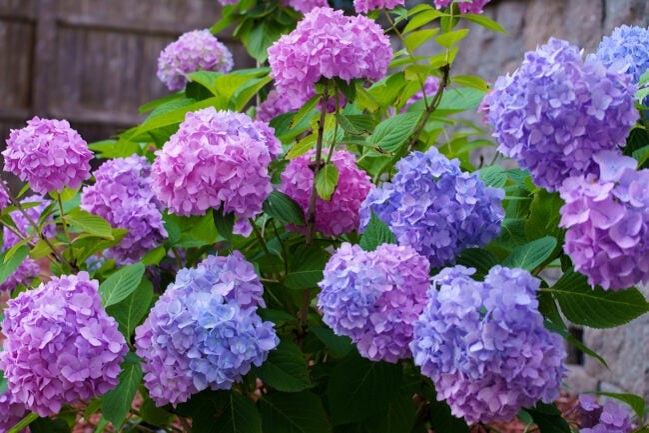
Karl Foerster Feather Reed Grass (Calamagrostis x acutiflora ‘Karl Foerster’)
Karl Foerster, an ornamental grass celebrated for its low-maintenance characteristics, can grace your garden with its striking presence. This grass typically reaches a height of 3 to 5 feet and showcases bronze, feather-like flowers on its vivid green, upright stems. As the seasons progress, these flowers transform into resplendent golden-hued seeds, lending a captivating allure to your garden even during the winter months. These seeds are also highly sought after for crafting dried floral arrangements.
For those seeking a resilient and adaptable addition to their garden, consider dividing existing Karl Foerster plants and planting them in September. This cultivar demonstrates exceptional cold and drought tolerance, maintaining its aesthetic appeal throughout the year. While most official sources classify Karl Foerster as suitable for Zone 5, with proper mulching, it can successfully overwinter even in Zone 4.
USDA Hardiness Zones: Karl Foerster grass is typically recommended for Zones 5 to 11.
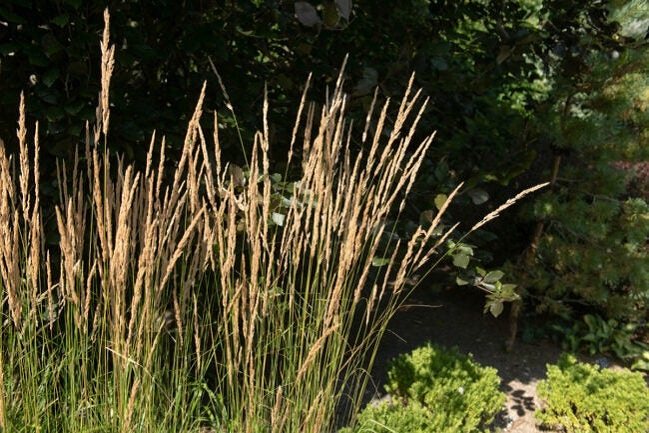
Harry Lauder’s Walking Stick (Corylus avellana ‘Contorta’)
Are you in search of distinctive trees and shrubs to grace your garden with charm? Look no further than Harry Lauder’s Walking Stick, a whimsical wonder also known as the corkscrew hazel. This unique shrub is celebrated for its captivating, twisting, and gnarled branches, creating an enchanting and unconventional silhouette. While it matures slowly to a height of approximately 6 feet, it serves as a striking focal point, especially when illuminated from below during the nighttime.
However, the mesmerizing branches are just one facet of its allure. By planting it in September, you’ll be treated to a delightful display of showy catkins that elegantly drape from the branches throughout the winter months.
USDA Hardiness Zones: Harry Lauder’s Walking Stick thrives in Zones 3 to 9.
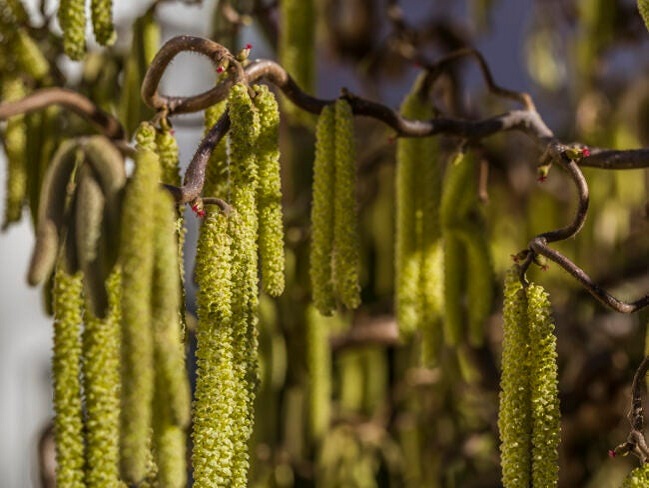
Cool-Season Grasses (Fescue, Ryegrass, Bluegrass)
In regions blessed with cool-weather grass, where winters usher in temperatures that dip below the seasonal norm, embarking on the journey of planting grass seed in September paves the way for a verdant, flourishing lawn in the seasons ahead. This strategic timing allows the grass seeds to sprout and establish their roots before the dormancy of winter sets in. Among the favored varieties for cool-weather lawns, you’ll encounter the likes of fescues, ryegrasses, and bluegrasses. Seek out a meticulously crafted seed mix tailored to the particular demands of your cold-weather growing zones.
USDA Hardiness Zones: Embrace this practice in Zones 2 to 7 for optimal results.
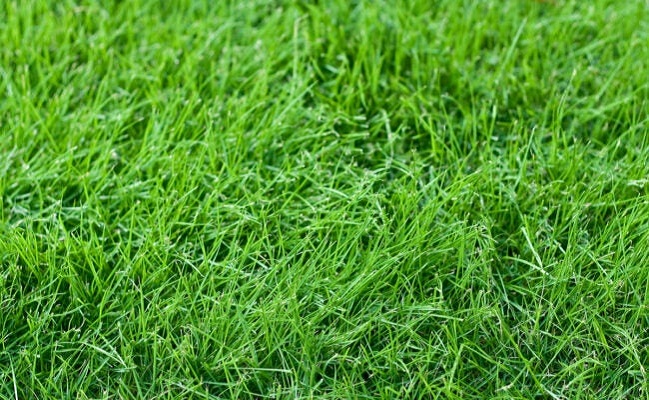
Cover Crops
Just as the calendar turns to September, it unveils a prime opportunity for sowing cover crops, like the dependable clover and the versatile buckwheat. When contemplating your fall planting endeavors, consider the invaluable role of cover crops, especially in the realm of gardening downtime and the practice of crop rotation.
Varieties like red clover (Trifolium pratense) and buckwheat (Fagopyrum esculentum) bring forth a multitude of benefits. They diligently work to enrich the soil by fixing nitrogen, beckon essential pollinators to your garden’s embrace, and wage a formidable battle against the encroachment of weeds.
For those who prefer a comprehensive approach, cover crop mixes featuring clover, vetch, and other nitrogen-fixing champions can be procured and sown with enthusiasm in September, reinvigorating garden beds post-harvest.
USDA Hardiness Zones: This practice thrives harmoniously in Zones 2 to 10, serving as a testament to its adaptability and utility.
